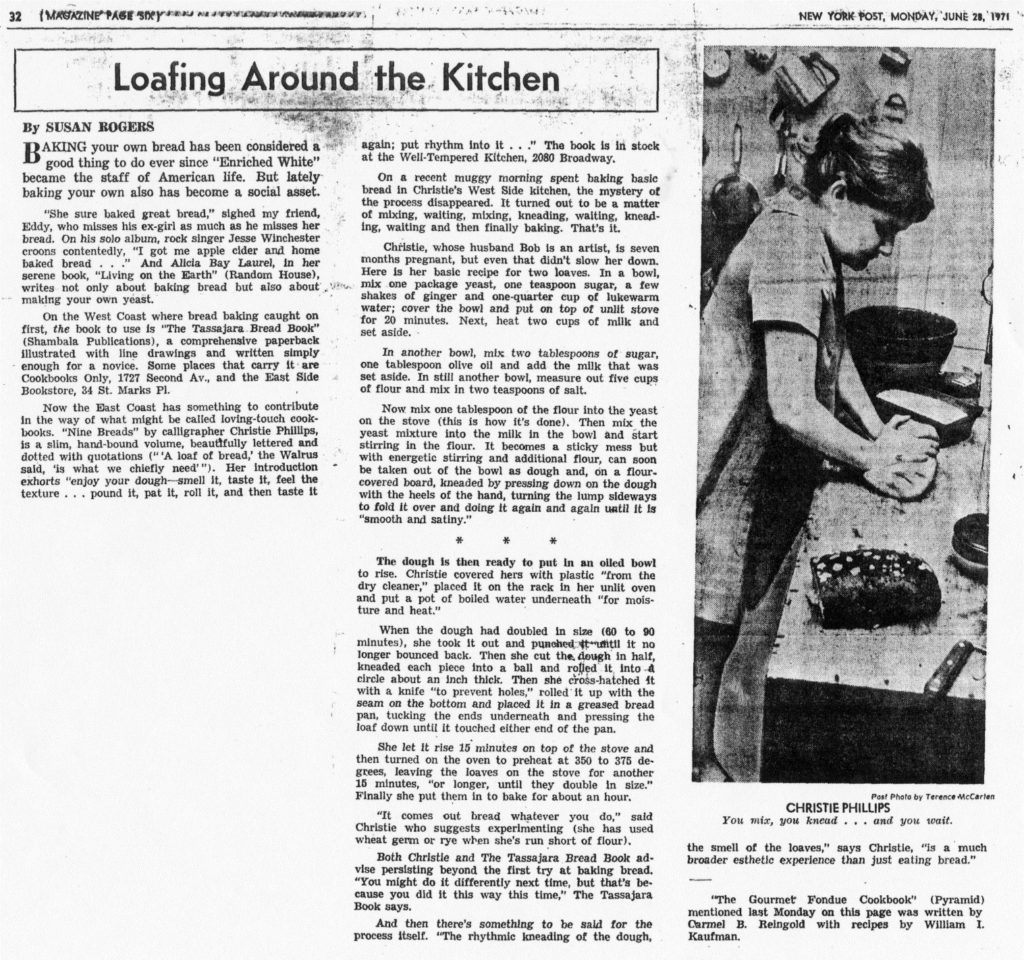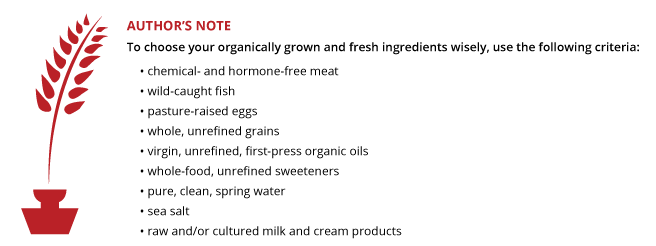In 1971, my mother, Christie Whaley (then Phillips) was an artist just getting her feet underneath her a few years out of college: a new wife, newly arrived in New York City after a lifetime in the Southern states, newly initiated into hippie counter-culture and anti-war activism.
As an artist, she was still experimenting with her media; her work was a hodge-podge back then. But one concept that emerged around that time was a lifelong love of calligraphy and a black-and-white, pen-and-ink style that would become a hallmark of her later work.
She was experimenting then, too, with any number of healthy diet choices to help control her type 1 diabetes, which she’d lived with since childhood. And hoping to best provide nutritionally for me, because she was pregnant and knew she would probably only be able to have one child, if any at all.
While she was gestating me, she was also gestating a cookbook, A Loaf of Bread, that combined her love of cooking with two of her chosen art forms. She gathered bread recipes from across countries and cultures, hand-lettered them, and, essentially, created illuminated texts of handmade, homemade bread recipes.
My mother didn’t teach me her love of healthy living in the twelve years she was alive after this New York Post article was printed, exactly one month before I was born, and my father never had it to teach me later. So I did not learn to cook well until comparatively late in life, in my late teens and early twenties.
After I had the basics down and was experimenting more than following recipes, I picked up my mom’s cookbook and used It to teach myself to bake bread. I admit, there was a spiritual component to all this—of course there was—but not in any ethereal sense. Breadmaking was a practical, down-to-earth way to hear my mother speaking to me, teaching me a lesson she had missed out on. And so had I.
If you’ve never made bread before without machinery, I encourage you to try. I’m convinced there is generational memory that lives in all of us, not just from mothers and grandmothers but from the earliest humans, to deduce how to mix ground grains and water and fire to make bread.
I taught myself to bake bread from the first section of A Loaf of Bread, “To Begin With.” These few paragraphs provide a framework of knowledge, with plenty of room, and encouragement, for experimentation. The primary lesson I took from her cookbook (at least about baking bread), was to use all of my senses to learn and know every loaf of bread I make. There will never be a machine that can do that.
The recipes are decidedly not for bread machines—even if I knew how to translate them, I wouldn’t. I presume dough hooks would not make a noticeable difference (I’ve never tried), but be forewarned: this is a very stiff, heavy dough.
And on a purely sentimental and/or spiritual note, if you can knead the bread with your hands, you may find (as I do) that you better experience the bread, both before and after baking. You may, indeed, be imbuing it with love (or whatever feeling you’re channeling) and taking on some of the relative sentience of the yeast rising into a different form; some of the warmth and comfort humans have felt for millennia at the smell, sight, and taste of new bread.
Honey Pear Health Bread
Made from all natural ingredients, this bread is sweet and densely textured.
Ingredients
1 tablespoon dry yeast (not yeast for bread machines)
¼ teaspoon of ginger
2 cups pear water, lukewarm
½ cup honey
1 cup wheat germ
7 cups whole wheat flour, sifted
½ lb. dried pears, soaked and chopped
1 cup almonds, finely chopped
½ cup oil
1 egg
1 teaspoon salt
1/ teaspoon coriander
Directions
- Pour 2 cups boiling water over pears and soak 1 hour.
- Dissolve yeast in water from pears.
- Add ginger, honey, wheat germ, and 2 cups flour, blending well.
- Cover and set in a warm place for 20 minutes.
- Add oil, egg, coriander, pears, nuts, and some flour, mixing with a wood spoon until dough cleans bowl. Knead in more flour to make a stiff dough.
- Place in oiled bowl, oil top, cover, and set to rise to double.
- Punch down and form two loaves.
- Place in greased pans, oil tops, sprinkle with almonds and rise again.
- Bake at 375°F for one hour. Cool.
About the Cookbook
In the 1970s, American artist Christie Whaley produced a hand-lettered, illustrated compendium of bread recipes from around the world, A Loaf of Bread. In 2014, thirty years after her untimely death, her daughter colorized the original black-and-white pages and re-released this stunning collection of illuminated recipes. Traditional bread-baking methods in many delicious variations—Portuguese White Bread, Orange Bread, Cornbread, Sourdough Bread, and more—are presented in the finest tradition of American folk art, suitable for framing and perfect to accompany your next meal.
Images from Mari Christie.




